When you are ready for a repaint, our tips for painting walls can help you transform your entire space.
The Best Way to Paint Walls
When it comes to home interiors, there really is no “fast and easy” way to paint walls. Two ways to ensure your painting project is a success: properly prepare surfaces for painting and take your time. Remember to read all labels and follow all instructions carefully.
Painting walls does not need to be difficult. Our How To Paint Walls video not only shows you how to paint a room, but gives you the interior painting tips that will help you achieve excellent results.
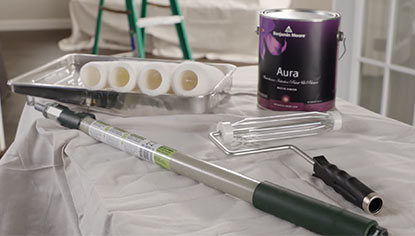
Step #1: Select the Right Tools for Painting Walls
The right tools are important. Here's what you'll need:
- High-quality roller sleeve and handle; use...
- a 3/8-inch (10mm) sleeve for most finishes
- a 1/4-inch (6mm) sleeve for glossy finishes
- a thicker, 1/2- or 3/4-inch sleeve for rougher, textured walls
- Wash and dry roller sleeves to remove any loose fibers prior to painting
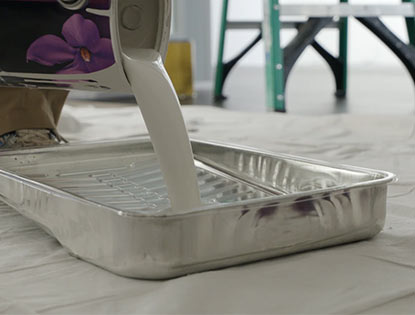
Other painting tools you'll need include a tray, an extension pole, drop cloth and a stepladder.
You’ll also need quality paint, like premium Aura® Interior, Regal® Select Interior, a favorite of homeowners and painting professionals, or ben® Interior, a paint formulated specifically to help DIY-ers to easily fix drips and smooth touch-ups.
Step #2: Prepare the Wall Surface
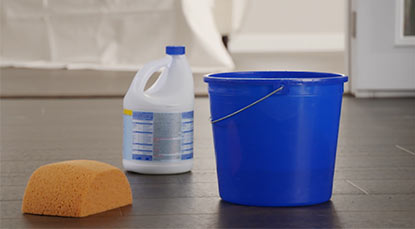
Preparing the walls of the room is always critical to a successful paint job, starting with cleaning. Most walls can be washed using a sponge and warm water. If there is mildew, be sure to remove it completely. Priming is also essential; be sure to ask for a deep base primer if painting a darker hue.
Step #3: Cut in the Room
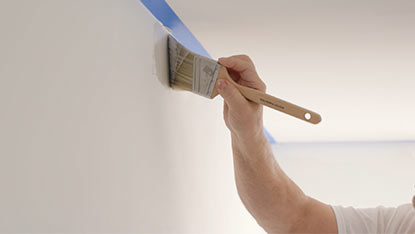
When you paint a room, you have to "cut in,” which means painting along the ceiling line, corners, windows, doors, molding, outlets and switches. This is usually done with a paint brush and tape.
See the video below for more information:
Step #4: Load Your Roller
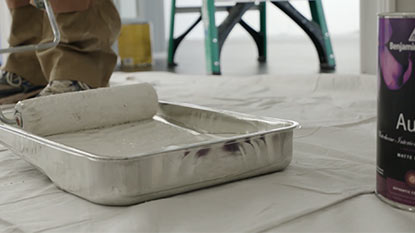
Place a liner in your paint tray, and carefully pour paint into the tray. Begin loading your roller by rolling it along the raised roll-off area of the pan. Touch the paint, but do so without completely immersing the sleeve. Repeat this motion until the roller is fully saturated.
Step #5: Start Rolling
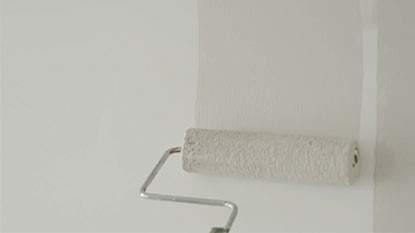
Start each section rolling from the top down first, overlapping each row about 3-5 inches. Apply only light pressure, letting the roller and the paint do the work. If you press too hard, you may create drips and runs.
Step #6: Reload and Avoid Streaks
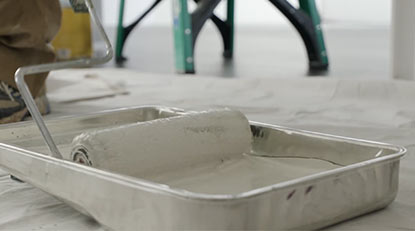
Every time you reload the roller, begin a new row on an unpainted area and work back into the previously painted row. Your extension pole should be long enough to allow you to reach the highest and lowest points of the wall comfortably.
Painting walls without streaks is one important technique to master; start by steering clear of painting too large a space at one time. Painting manageable-sized areas will help you maintain a “wet edge”—the application of paint toward the unpainted area and then back into the just-painted surface—which will ultimately produce a smooth, uniform appearance and help to prevent lap marks.
Step #7: Let Dry, Recoat, and Let Dry Again

We recommend at least two coats of your topcoat product for optimal hide and color development. Check the paint can for the recommended drying times and wait until the paint is completely dry before you add the second coat. Be sure to allow proper cure time before returning fixtures, wall plates or frames to the walls.
Have More Questions? Contact us at 416.767.5171 or info@westtorontopaint.ca

